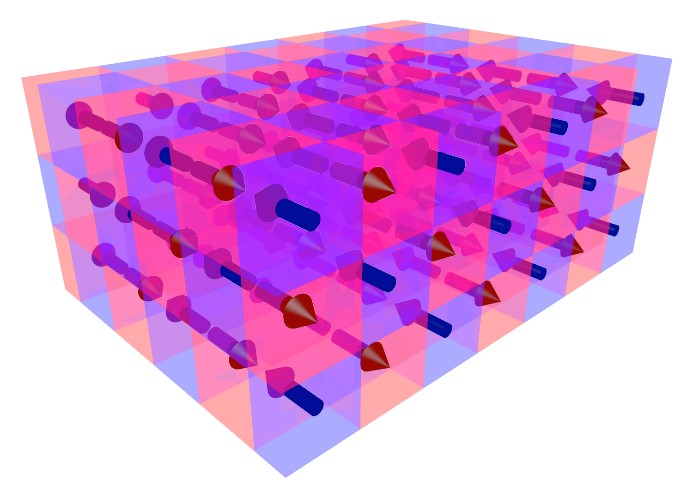| Dec 07, 2022 |
|
(Nanowerk News) Smaller, faster, more powerful: The demands on microelectronic devices are high and are constantly increasing. However, if chips, processors and the like are based on electricity, there are limits to miniaturization. Physicists are therefore working on alternative ways of transporting information, such as about spin waves, also called magnons, for example. The advantage would be that they have very little energy loss and can therefore spread over long distances. However, spin waves do not form in just any material, they need certain properties to do so. Hematite, for example, the main component of rust, offers these properties.
|
New material class for spin wave transport
|
|
In an EU project together with the Université Paris-Saclay, Shanghai University and Université Grenoble Alpes, physicists at Johannes Gutenberg University Mainz (JGU) have now been able to develop a completely new class of materials for transporting spin waves: antiferromagnets with tilted magnetic moments (Nature Communications, “Anisotropic long-range spin transport in canted antiferromagnetic orthoferrite YFeO3“).
|
|
“These materials have the potential to increase computing speed significantly compared to existing devices and at the same time greatly reduce waste heat,” said Felix Fuhrmann of Mainz University.
|
 |
| The microscopic moments in antiferromagnetic materials have alternated orientation, in contrast to the ones of ferromagnets. (Image: Lorenzo Baldrati, JGU)
|
|
In the antiferromagnets, the spin waves and thus the information stored in them can be transported over long distances – a distance of around 500 nanometers is possible. It may not sound much, but transistors in chips today are usually only about seven nanometers in size, so the range of the spin waves is significantly greater than the distance required.
|
|
“The transport of information over long distances is crucial for an application in microelectronic devices. With the antiferromagnets, we have found a material class that offers this important property and thus opens up a large pool of materials that can be used for devices,” emphasized Fuhrmann.
|
An external magnetic field as enabler
|
|
The scientists examined the canted antiferromagnet yttrium iron oxide, YFeO3. Since its crystal structure differs fundamentally from that of the established hematite, the researchers initially asked themselves whether spin waves can still form and propagate – and found out that they definitely can. A little trick makes it possible: the physicists apply an external magnetic field to the material.
|
|
“Magnons are a collective excitation of the magnetic moments in a magnetically ordered crystal. They can therefore be manipulated by magnetic fields, as we were able to successfully demonstrate,” said Fuhrmann.
|


